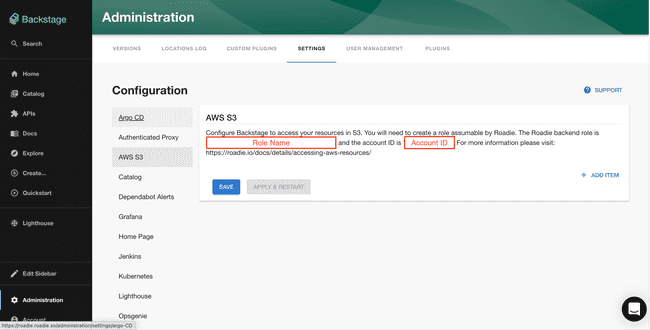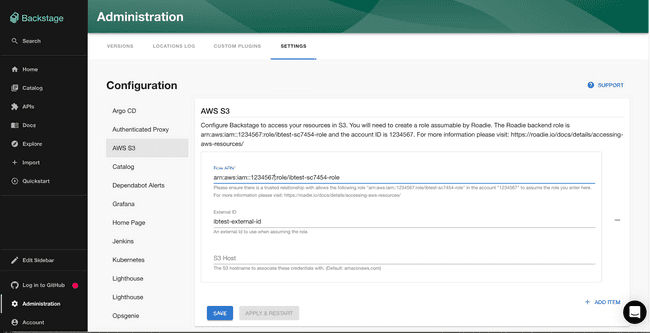Integrating with AWS S3
Published on March 29th, 2022Introduction
S3 can be a useful place to store certain resources used by backstage plugins like OpenApi spec files.
This guide describes how to set up access for Roadie to your S3 buckets in your infrastructure and configure it.
Step 1: Get the roadie IAM details
Navigate to Administration > Settings > AWS S3 and make a note of the Roadie backend role ARN and account ID.
Step 2: Create a federated role in your account for Roadie
Follow the steps here to create the role.
The role needs to follow this naming convention arn:aws:iam::*:role/<your-tenant-name>-roadie-read-only-role where
You’ll need to attach a policy which allows access to the required S3 buckets such as AmazonS3ReadOnlyAccess. This policy grants roadie read access to all buckets.
If you do not want to grant this access you can create your own policy
which restricts access to only certain buckets. e.g.
{
"Version": "2012-10-17",
"Statement": [
{
"Effect": "Allow",
"Action": [
"s3:GetObject"
],
"Resource": "arn:aws:s3:::my-bucket/*"
},
{
"Effect": "Allow",
"Action": [
"s3:ListBucket"
],
"Resource": "arn:aws:s3:::my-bucket"
}
]
}Step 3: Configure your Roadie instance to use the new role
On the AWS S3 settings page Administration > Settings > Aws S3 in Roadie click Add Item and enter the newly created
role ARN and external ID. The S3 host is only required if you’re using different roles for different buckets.

